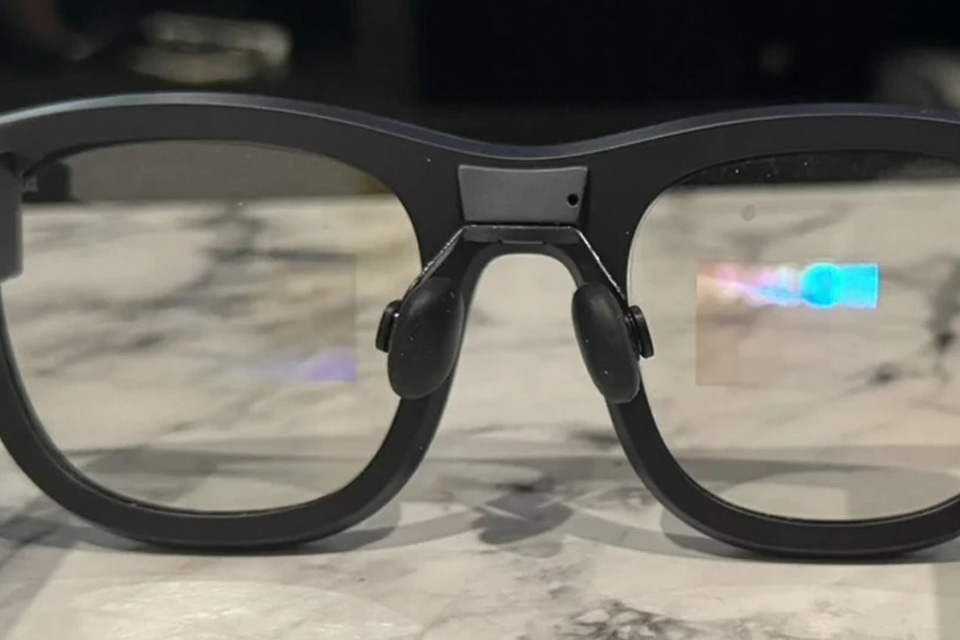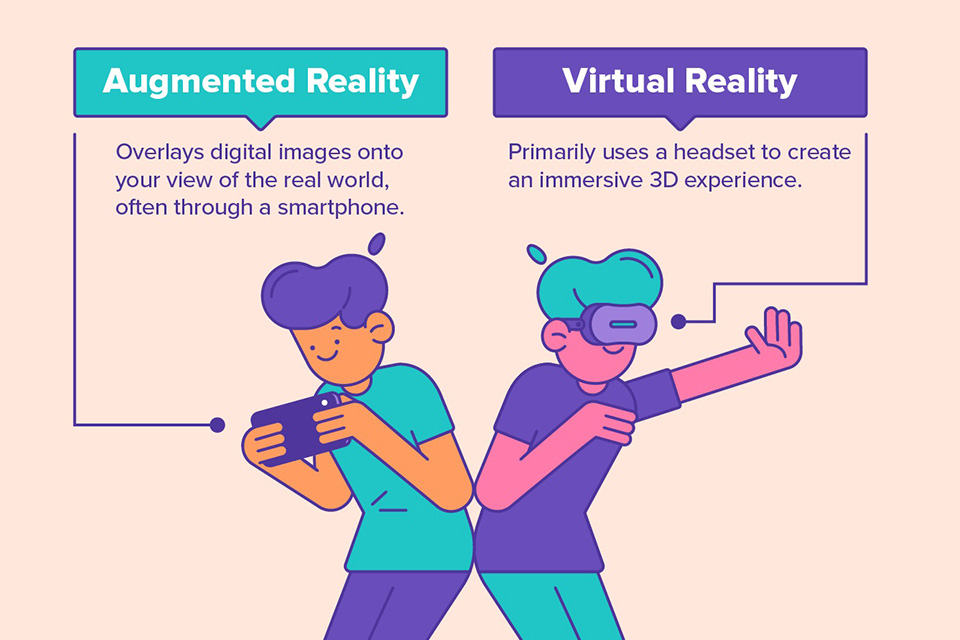The rise of smartphones has been nothing short of revolutionary, but the tech landscape is always shifting. The question now is, are we on the cusp of another major change with smart glasses and augmented reality (AR) poised to take over? This article delves deep into the potential of AR glasses to eventually replace smartphones, examining the technology, the challenges, and the possibilities that lie ahead. It is worth reading because it provides a comprehensive overview of the potential shift from smartphones to smart glasses, offering valuable insights into how this transformation could impact our daily lives.
Augmented reality (AR) and virtual reality (VR) are often discussed together, but they represent fundamentally different approaches to digital experiences. Augmented reality overlays digital content onto the physical world, enhancing what we already see. Think of seeing navigation arrows projected onto the street in front of you, or viewing furniture in your home using your smartphone's camera. In contrast, virtual reality creates completely immersive digital environments that block out the physical world, as you might experience in a VR headset gaming session. The core difference lies in the users' interaction with reality; AR enhances it, while VR replaces it. Both technologies are powerful, but their application and potential for everyday life differ significantly.
AR technology relies on a combination of sensors, cameras, and powerful compute to understand the user's environment and place digital elements correctly within it. The quality of the AR experience is directly tied to the speed and accuracy of this process. Currently, smartphones serve as a common platform for AR experiences, but limitations in form factor and user experience make it clear that more specialized devices like AR glasses are needed to unlock the technology's true potential. A device like glasses would allow for a much more seamless and natural integration of augmented reality into our everyday routines.

The idea of glasses to replace smartphones isn't new, but recent advancements in technology and the emergence of powerful players like Meta and Apple have brought it closer to reality. The smartphone has become an indispensable tool, but its form factor isn't ideal for certain tasks. Holding a screen while navigating or trying to capture moments can feel cumbersome. AR glasses, on the other hand, offer a hands-free, heads-up display that could allow us to interact with digital content in a much more natural and intuitive way. This shift could lead to more seamless integration of technology into our lives, making our days more efficient.
Think ar glasses as a potential replacement, that offer the potential to move past the limitations of the small rectangular screen of our mobile phones. The vision is to integrate digital information directly into our field of view, enhancing our perception of the physical world. This is where augmented reality shines, not replacing our reality, but enriching it. Moreover, wearing a pair of glasses is a far more natural activity than holding up a smartphone constantly. The wearable nature of smart glasses is a significant advantage. For these reasons, many believe that smart glasses will replace smartphones eventually.
For smart glasses to become a viable replacement for smartphones, they need to offer a compelling and comprehensive set of features that users rely on daily. These include: high-quality, unobtrusive displays with a wide field of view; reliable and seamless connectivity for data transfer; long battery life to support all-day use; comfortable and stylish form factor that people would wear without discomfort or self-consciousness; robust processing power to handle complex augmented reality applications; and intuitive user input methods beyond just voice commands. We need more than just basic notification displays.
The glasses need to be able to replicate the core functionalities of smartphones - communication, entertainment, navigation, and information access – all while offering the added benefit of AR experiences. They also need to integrate with existing ecosystems seamlessly, allowing users to transfer their data and preferences. Think ar glasses should be able to handle calls, send texts, access email and other inbox content, and navigate using augmented reality. The goal is for these devices like smart glasses to handle all the tasks that a smartphone does, and offer an immersive experience, but in a more convenient form factor. The potential is there, but it requires significant technological advances to create such a mature device.

Developing AR glasses that can effectively replace smartphones presents numerous technological and design challenges. One of the biggest is achieving a small, lightweight form factor that users would comfortably wear for extended periods. Current technology often involves bulky and uncomfortable headsets, which are not ideal for everyday use. Another hurdle is improving display technology to achieve high brightness and clarity in various lighting conditions without sacrificing battery life. The display technology for these AR glasses needs to be able to produce images that blend seamlessly with the physical world.
Power consumption is a significant obstacle. Current AR systems require a lot of compute power, leading to short battery life and overheating. Developing more efficient processing and battery technology is crucial. Furthermore, developing intuitive and reliable user input methods beyond just voice commands is essential. Another major challenge is cost: high-end AR glasses are currently expensive, and the price will need to come down significantly to reach widespread adoption. The technology has come a long way, but we are still some time away from this perfect solution.
The AR glasses market is rapidly evolving, with several major players vying for dominance. Meta, with its significant investments in both AR and VR and its newly unveiled Ray-Ban Meta smart glasses, is a key player to watch. Meta, under the guidance of Mark Zuckerberg, has long-term plans to integrate AR into the lives of millions of people. They’re pushing boundaries and trying to set the stage for future wearables. Apple has also entered the arena with its Vision Pro mixed reality headset, although it's positioned more as a premium device. While it's not a pair of glasses in a traditional sense, it showcases Apple's commitment to spatial computing.
Other companies, like Google (with their legacy in Google Glass and ongoing research in AR) and Samsung, are also important contenders. There are also a number of startups focusing on specific aspects of AR tech, as well as manufacturers like Xreal that are trying to enter into the mainstream. The competition is heating up, driving innovation in AR glasses and putting the goal of glasses replace smartphones within reach. The future of ar, and who will be a part of that future, is still unwritten.
Artificial intelligence (AI) is set to play a crucial role in enhancing the capabilities of AR glasses. AI can improve the glasses' understanding of the user’s environment, allowing for more accurate and relevant augmented reality overlays. It can also facilitate natural language processing for more seamless voice control and interactions with the device. Meta AI is already experimenting in how the device's camera can be used to enhance the use of AR. AI will be critical to creating user-friendly and intuitive AR glasses.
AI can personalize the augmented reality experience, adapting to the user's preferences and needs. Imagine your AR glasses proactively displaying relevant information or anticipating your next action based on your context. AI could also assist with real-time translation, image recognition, and content generation on the fly. AI also can work with computer vision to understand everything that the user sees. It can analyze and make the experience as useful as possible. All of these features will make the experience more immersive and useful. AI will enable the use of ar in a wide range of use cases.
The concept of our inbox will undergo a massive shift thanks to AR glasses. Imagine instead of pulling out your smartphone to check your messages, they appear as subtle overlays in your field of view. Notifications, emails, and text messages could pop up discreetly as needed, allowing you to stay connected without being constantly glued to a screen. With emg input device and similar technologies, the user can interact with digital content just by using eye movements, facial movements or thoughts. The way we communicate will also evolve thanks to smart glasses.
With AR glasses, we could use holographic calls or virtual meetings, allowing us to see and interact with others in a more natural and immersive way. These would also provide a way to collaborate and share digital content easily. Imagine attending a remote meeting and seeing your colleagues in a spatial video, right next to your desk. This type of technology will change the way we do business and interact with one another. It also means that many people would not need a smartphone, as a pair of glasses would cover most of the features they use.
The debate of whether headsets and glasses will replace smartphones comes down to their readiness to become the next mobile computing platform. Currently, many believe the technology is still in its early stages. Devices like the Apple Vision Pro and the Meta Quest Pro showcase the potential of powerful XR and mixed reality, but they are still far from being the perfect devices we need for everyday use. Their price is prohibitive and the form factor is not ideal for all situations. But the progress is rapid and technology has come a long way.
However, many tech leaders believe that wearable tech like AR glasses will eventually replace smartphones as the main computing platform. The push towards hands-free computing will result in less need for touch interfaces. The transition won’t be immediate, but it’s expected to become increasingly common to interact with technology through glasses. This technology would represent the next major evolution in personal computing. The future will likely see both headsets and glasses playing different, yet important, roles in how we interact with technology. Smart glasses will continue to evolve towards a full replacement of smartphones.

Predicting the exact timeline for the widespread adoption of AR glasses is tricky. While some enthusiasts believe the technology is already poised to take over, many experts think it will be a more gradual transition. The development of technologies like a comfortable form factor and battery solutions will dictate adoption. Currently, we are in a stage where manufacturers are releasing new prototypes, and trying to improve the core technology to better appeal to the masses. We also have to look at the price, which remains an obstacle for widespread use.
Based on the current trajectory, it's unlikely that we'll see smart glasses completely replace smartphones by 2024 or even 2025. It's possible that by the end of the decade, or around 2030, we might see AR glasses become a more common sight. This timeline could be accelerated if a breakthrough is made in one of the technology bottlenecks. For example, if a company manages to create cheap and mass-producible glasses, we might see people will buy them much faster. Also, a company like Apple could help push the technology into the mainstream faster than anyone else, like with previous devices. In the near future, smart glasses aren’t going to replace smartphones.
The future of AR is incredibly promising, with smart glasses poised to play a central role in its evolution. These devices could transform everything from the way we work and learn to how we socialize and navigate the world around us. Imagine the potential for immersive learning experiences, hands-free assistance, and innovative forms of entertainment. The aim is to seamlessly integrate the digital and physical worlds. AR experiences can be used in a variety of use cases.
As technology improves, AR glasses will become more powerful, discreet, and affordable. The development of better sensors, displays, and processing power will enhance user experience and accelerate adoption. We are looking at devices that will be able to overlay data in a more intuitive and seamless way, without the need to look at a phone or a computer screen. Smart glasses, and the underlying technology, are going to revolutionize the way we interact with technology. The future is bright for augmented reality.
AR vs. VR: Augmented reality overlays digital content onto the real world, unlike virtual reality which creates an immersive, entirely digital environment.
Smartphone limitations: Smartphones, while revolutionary, have limitations in form factor and user interface that AR glasses aim to overcome.
Key AR glasses features: Successful AR glasses will require high-quality displays, robust connectivity, long battery life, and intuitive user input.
Challenges: Development challenges include miniaturization, power efficiency, display clarity, and affordable manufacturing.
Major players: Meta, Apple, Google, and Samsung are leading the charge in AR glasses development.
AI enhancement: Artificial intelligence will play a crucial role in enhancing user experience by providing context-aware assistance.
Communication revolution: AR glasses could redefine the way we interact with our inbox and connect with others.
Mobile computing platform: AR glasses are poised to become the next major mobile computing platform.
Timeline for widespread adoption: While not immediate, expect the shift towards AR glasses to happen gradually over the next few years.
Future of AR: AR and smart glasses are on track to transform how we work, learn, socialize, and navigate the world around us. Thanks for reading.
Contact: Ashley Wu
Phone: +86 17773983073
E-mail: [email protected]
Add: 708 Room A Buiding Huafeng International Robot Industrial Park Xixiang Bao'an